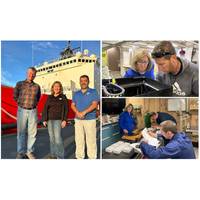
NPS Research on Coast Guard Icebreaker to Enhance Arctic Readiness
lead to an inability to sleep normally, also called circadian scarring. While we can train our service members in procedures, tactics, and even how to cope with stress, our warfighters require quality sleep to maintain peak effectiveness for various tasks.”One of the new tasks envisioned is the 3D printing of parts at sea, especially in austere or contested environments where supply chains are limited. The Amos01 3D printer aboard the Healy was developed by the Naval Information Warfare Center Pacific; its data acquisition system is being tested aboard other U.S. Navy ships, but this is the first
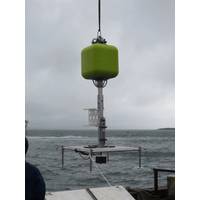
Lander Lab #4: Underwater Releases
. They each adopted the idea and found it worked fine. In a careful study, the Cal Poly students found all colors of lifesavers could hold up to 10-lbs (all broke at about 20-lbs), and would release between 17-25 minutes in flowing water, depending on the weight being carried. 3D printing filament3D printing uses two kinds of filament. One for mechanical strength of the final part, and another to create support structure as the part is being made, if required. The support material must be removed from the final part before it is put into use. The support material Polyvinyl
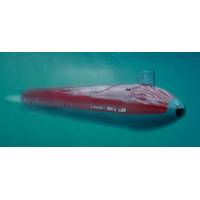
XLUUV: If You Build It, They Will Buy
moved into the undersea domain with its acquisition of Dive Technologies, the Quincy, Massachusetts developer of the Dive-LD, a 5.8-meter, 2720 kg large displacement unmanned underwater vehicle (LDUUV). Founded by former Bluefin Robotics engineers, Dive pioneered the use of additive manufacturing (3D printing) to fabricate the LD’s outer hull, as well as its internal components and substructures. With the Dive acquisition, Anduril is now uniquely positioned to offer the RAN a near-term undersea warfare solution by combining the Dive-LD’s manufacturing methods with Anduril’s advanced
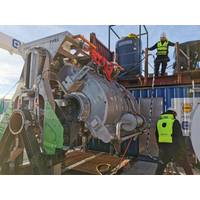
Subsea Tech: Taking 3D Printing to the Seabed
where internal corrosion is a common issue. PTTEP of Thailand has been our partner through the development of the Nautlus, and will also be the pilot client for introducing the service in the region, says Carlsen.In tandem with commercialising the composite repair system, has been working on adding 3D printing to Nautilus’ capabilities and has recently joined forces with Equinor, SINTEF and Gassco, with Norwegian National Research Council funding and support from part-owner-incubator Kongsberg Innovation to make this happen. Just like the composite repairs, the process would be done inside the Nautilus
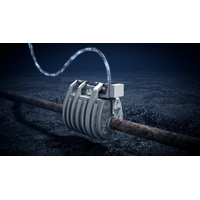
Subsea 3D Printing Tech Targeted for 2022
Norwegian robotics company Kongsberg Ferrotech has joined forces with Equinor, SINTEF, and Gassco to develop 3D printing technologies for subsea equipment repair and maintenance.The company has already developed a subsea robotic system, Nautilus, that can be used to carry out remotely operated composite repairs on subsea pipelines.Now the Kongsberg Ferrotech wants to add additive printing capability to these systems, using metallic media to repair defects, with support from the Research Council of Norway through the PETROMAKS 2 program. The company will use 3D printing to rebuild damaged metal structure
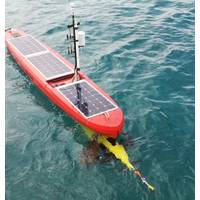
Unmanned Marine Systems, Squared
conditions, so needed changing, says Nichol. Instead of more traditional biofouling paints, which leach copper, the project is looking at a type of vinyl, creating a Teflon-like surface.Increasingly AutoNaut’s USVs, including a sensor payload in a fin unit, have been made easier by the use of 3D printing, says Nichol, which not only makes producing parts (mostly with a nylon resin) easier (e.g. moulds don’t have to be made to create some parts and the amount of complex machining is reduced), but also allows for more flexible design, i.e. it’s not constrained by manufacturing methods
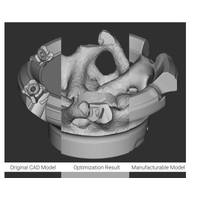
The Case for 3D Printing Downhole Tools
Advanced design software supports growth of additive manufacturing applications in the oil and gas industryAdditive manufacturing (AM, aka 3D printing) is beginning to impact product-development strategies in the oil and gas industry just as it already has in many other industries—by shifting the production paradigm in unexpected ways.Particularly in the case of downhole tools, overall tool size is compatible with the range of part dimensions that today’s AM systems are capable of manufacturing. Consider a common piece of equipment on any oil and gas rig: the tricone drill bit. Required to

SRO Solutions Upgrades IBM Maximo for FPSO Player MODEC
management software by redeveloping all of the workflows in the system, including service requests, work orders, purchase requisitions, requests for quotations, purchase orders and deferrals. It also built in a feature to record shipping manifests to track outbound and inbound deliveries and a label printing function so that all items received are automatically given a barcode," SRO said.The projects for MODEC took more than 1,300 hours to implement and saw SRO delivering staff training on the new system, SRO said.SRO senior consultant Jonathan Ritchie, who led the projects, said: “The business
TMS to Use 3D Printers for Submarines
TechCenter Additive Manufacturing (in Mülheim an der Ruhr, North Rhein-Westphalia), the required technology and expertise will now come to the Kiel Fjord. It is planned to complete the transition by June 2020.Dr. Luis Alejandro Orellano, COO of thyssenkrupp Marine Systems said: "3D printing opens up completely new potentials for us. In the design engineering, we no longer have to consider the limits of conventional manufacturing processes everywhere. In this way, we give our customers more freedom in the design of the boats."Orellano added: "At the same time, we can produce



 February 2024
February 2024





